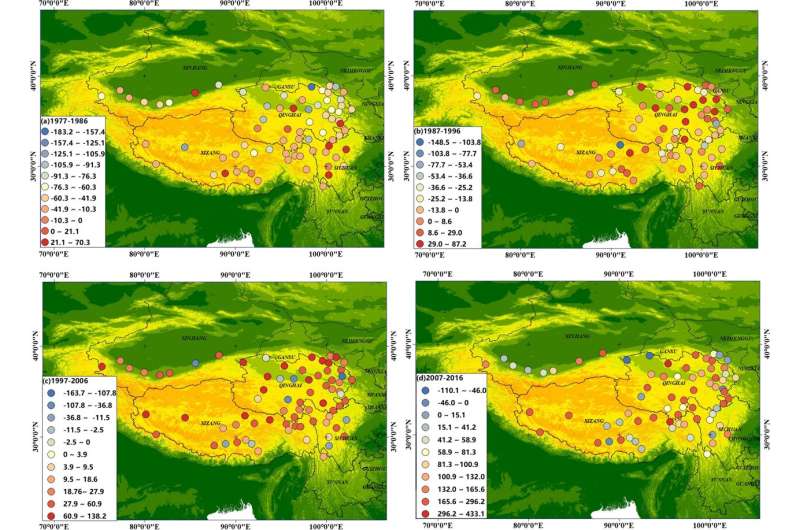This article has been reviewed according to Science X's editorial process and policies. Editors have highlighted the following attributes while ensuring the content's credibility:
fact-checked
trusted source
proofread
Study reveals relationship between spatiotemporal variations of freezing index and permafrost degradation

The freezing index (FI) is a crucial factor for calculating the temporal and spatial distribution of permafrost and the thickness of the active layer in a permafrost region. Understanding the variation in thermal conditions of the permafrost active layer is significant for investigating both the spatial and temporal distribution of permafrost as well as its degradation.
A research team from the Northwest Institute of Eco-Environment and Resources (NIEER) of the Chinese Academy of Sciences (CAS) collected data of 5-cm soil temperature underground during the freezing periods from 1977 to 2016 on the Qinghai-Tibet Plateau (QTP) to better understand the changes in thermal conditions of the active layer.
Their study was published in Theoretical and Applied Climatology on Sept. 30.
The researchers analyzed spatiotemporal variations of the FI across the QTP and discussed the factors influencing FI variation as well as the relationship between permafrost degradation and FI variation.
Results indicated that the FI was smaller in the interior of the QTP but larger in its marginal areas. Throughout the entire freezing-thaw cyclic process, the interior of the QTP exhibited greater stability compared to its marginal areas.
Furthermore, the FI exhibited an increasing trend from 1977 to 2016. Larger climatic tendency of FI values was observed in the northern and central parts of QTP as well as the Qaidam Basin.
The study also showed that elevation significantly affected FI values. FI values decreased as elevation increased. The high elevation region was more sensitive than the low-elevation regions.
"We discover a close relationship between the degradation of permafrost and the variation in FI, as well as among FI, maximum freezing depth (MFD) and active layer thickness (ALT)," said Li Ren from NIEER, first and corresponding author of the study. Specifically, for every 10.0℃ d increase in FI, there was a corresponding decrease of 1.4 cm in MFD and an increase of 1.6 cm in ALT.
More information: Ren Li et al, The spatiotemporal variations of freezing index and its relationship with permafrost degradation over the Qinghai–Tibet Plateau from 1977 to 2016, Theoretical and Applied Climatology (2023). DOI: 10.1007/s00704-023-04672-1
Provided by Chinese Academy of Sciences




















